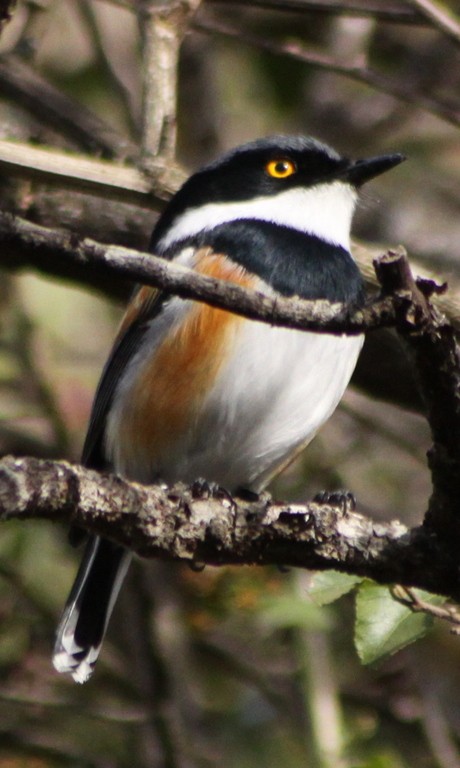Cape Batis
A species of Batises Scientific name : Batis capensis Genus : Batises
Cape Batis, A species of Batises
Botanical name: Batis capensis
Genus: Batises
Content
Description General Info
Description
The Cape batis is strikingly patterned. The adult male has a grey crown, black eye mask and white throat. Its back is brown, with a black rump and tail and rufous wings. The underparts are white with a broad black breast band and rufous flanks. The female and juvenile plumages differ in that the breast band is narrower and rufous, not black, and there is a small rufous patch on the throat. Their rufous wings and flanks distinguish them from other Batis species in the region. The males of the two Malawian subspecies (B. c. dimorpha and B. c. sola) differ in having colder tones to the upper part and flank plumages (lacking any rufous or olive), besides having shorter bills, and are sometimes separated as the Malawi batis (Batis dimorpha). The population of Mount Namuli may represent a third subspecies of this northerly taxon. The song is typically a triple whistle cherra-warra-warra or foo-foo-foo. 
Size
13 cm
Nest Placement
Shrub
Habitat
The cape Batis resides in a range of wooded habitats from sea level to altitudes above 2,000 meters, adapting to environments such as cool coastal forests, evergreen mountain woodlands, and dense bush. It thrives at forest edges and in areas populated with tall-standing scrub, Podocarpus forests, and degraded woodlands, including gardens and hillsides with dense vegetation.
Dite type
Insectivorous
General Info
Feeding Habits
Bird food type
Behavior
Both the male and the female will aggressively defend their territory. When larger birds of prey, animals or humans approach, the bird will often perch conspicuously near the intruder and angrily protest audibly. The Cape batis hunts by flycatching, or by taking prey from the ground like a shrike. The nest is a small neat cup low in a tree or bush. 
Distribution Area
It is resident in cool coastal forests, moist evergreen mountain forests and wooded gorges. It is native to South Africa, Swaziland, the Matobos and Eastern Highlands of Zimbabwe and adjacent Mozambique, and the mountains of Malawi and those of adjacent Zambia and Mozambique. 
Species Status
Not globally threatened.
Scientific Classification
Phylum
Chordates Class
Birds Order
Perching birds Family
Wattle-eyes and batises Genus
Batises Species
Cape Batis 